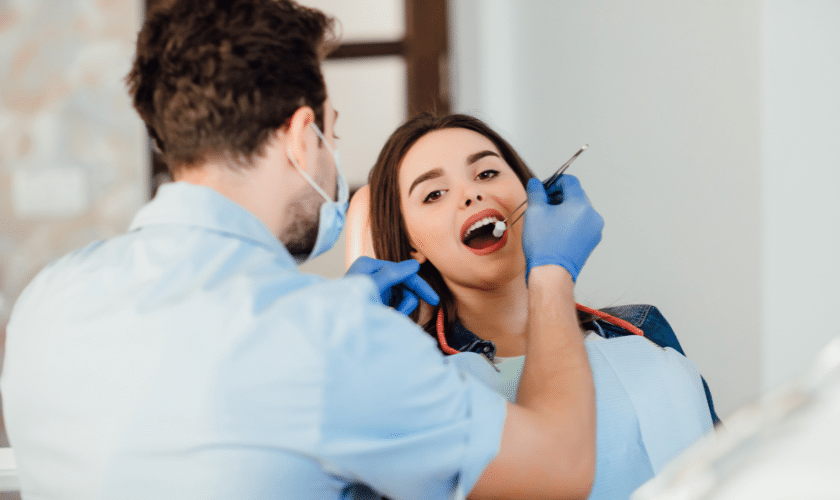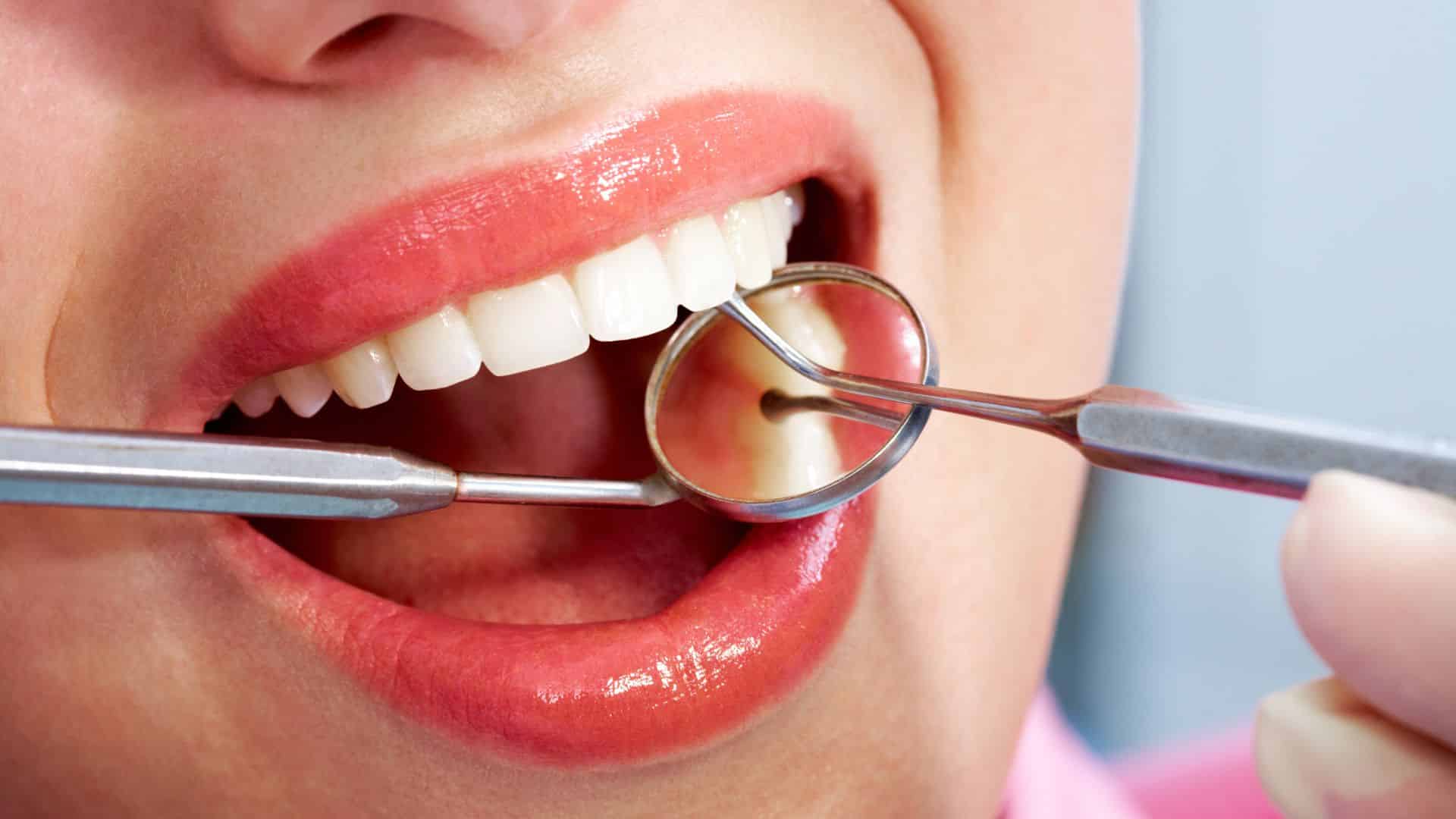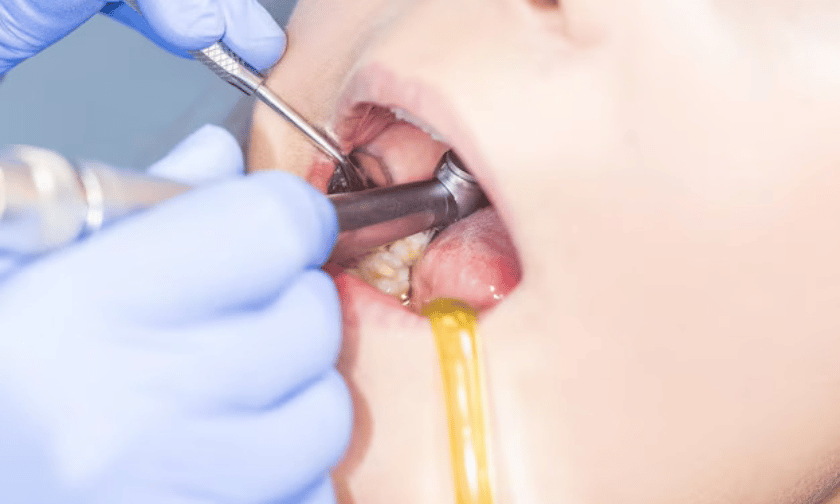
Are you self-conscious about your smile? Do you have chipped, cracked, or discoloured teeth that make you hide them behind closed lips? If so, dental bonding might be the solution for you. Dental bonding is a quick and easy cosmetic dentistry procedure that can improve the appearance of your teeth in just one visit to your dentist’s office. In this blog post, we’ll cover everything from what dental bonding is and its different types to benefits, foods to eat with it and alternatives. So sit back, relax and get ready to learn all about dental bonding!
What is Dental Bonding?
Dental bonding is a cosmetic dental procedure in which a tooth-coloured resin material is applied to the teeth and hardened with a special light. The process bonds the resin to the tooth, improving its appearance and function.
The procedure is often used for minor corrections such as chipped, cracked or discoloured teeth. It can also be used to fill cavities and protect exposed roots from gum recession.
Dental bonding does not require anaesthesia unless it’s being used to fill a cavity. It’s considered one of the least invasive cosmetic dentistry procedures available. Bonding typically takes 30 minutes to an hour per tooth, depending on how much work needs to be done.
After application, dental bonding looks like natural teeth and lasts between three and ten years before needing touch-ups or repairs. To ensure that your dental bonding lasts longer, it’s best to avoid biting down on hard objects such as ice cubes or pens.
Dental bonding is perfect for those who want quick and affordable cosmetic improvements without undergoing more extensive treatments like veneers or crowns.
The Different Types of Dental Bonding
Dental bonding is a cosmetic procedure that involves the use of composite resin to repair or improve the appearance of teeth. There are two types of dental bonding: direct and indirect.
Direct bonding involves applying the composite resin directly onto the tooth surface and shaping it to match the natural contours of your teeth. This type of bonding is typically used for minor repairs such as chipped, cracked or stained teeth.
Indirect bonding, on the other hand, requires taking an impression of your teeth and creating a custom-made restoration in a lab before attaching it to your tooth with adhesive cement. This type of bonding is often used for more extensive repairs such as filling cavities or restoring damaged or missing teeth.
Both types offer similar benefits including improved aesthetics, increased functionality, and protection against further damage. However, indirect bonding tends to be more durable and long-lasting than direct bonding due to its customized fit.
Benefits of Dental Bonding
Dental bonding is a highly effective cosmetic dentistry procedure that offers numerous benefits to patients looking to enhance the appearance of their teeth. One of the main advantages of dental bonding is its ability to completely transform the look and feel of your teeth in just one appointment.
Another key benefit of dental bonding is that it’s a quick, painless and affordable solution for several dental issues such as chipped, cracked or discoloured teeth. The process involves applying a tooth-coloured resin material onto your natural tooth surface which then hardens under UV light resulting in an unnoticeable repair.
Dental bonding also helps protect sensitive parts of your teeth by covering them with a protective layer. This means you can enjoy hot or cold food without experiencing any discomfort.
Unlike other cosmetic procedures like veneers or crowns, dental bonding does not require extensive preparation before application making it less invasive while still delivering excellent results.
Choosing dental bonding as an option for improving the appearance and strength of your smile has many benefits that can help boost self-confidence and improve oral health.
What Foods to Eat with Dental Bonding?
After dental bonding, it is important to be mindful of what you eat in order to avoid damaging the bonding material. For the first 48 hours after the procedure, it is best to stick with soft foods that require minimal chewings such as soups, smoothies and mashed potatoes.
After those initial two days have passed, you can start incorporating more solid foods into your diet but should still avoid anything overly crunchy or sticky. This includes things like popcorn, hard candy and chewing gum.
Instead, opt for healthy options like fruits and vegetables that are easy to chew and won’t damage the bonding material. Lean proteins such as chicken or fish are also a good choice.
It’s also important to avoid consuming too much sugar or acidic foods which can weaken the bonding agent over time. Try replacing sugary drinks with water or unsweetened tea instead.
By being mindful of what you eat after dental bonding, you can help ensure that your bondings last as long as possible while maintaining good oral health overall.
Source: AceDentalEducation
Alternatives to Dental Bonding
While dental bonding is a popular cosmetic dentistry procedure, it may not be the best option for everyone. Fortunately, there are some alternatives to consider.
One alternative to dental bonding is porcelain veneers. Veneers are thin shells that are placed over the front of teeth to improve their appearance. They can correct issues such as chipped or cracked teeth, gaps between teeth and discolouration. Porcelain veneers tend to last longer than dental bonding and have a more natural look.
Another alternative is orthodontic treatment such as braces or clear aligners like Invisalign. These treatments can straighten crooked teeth and close gaps between them without resorting to bonding or other cosmetic procedures.
If you’re looking for a less invasive option than either of these choices, tooth whitening may be an effective choice for you. Professional in-office whitening treatments can brighten your smile by several shades in just one appointment.
Ultimately, the best course of action depends on your individual needs and goals for your smile’s appearance. Consult with your dentist about all available options before making any decisions regarding which procedure is right for you.
To sum it up, dental bonding is a popular cosmetic dentistry procedure that can help you achieve a beautiful smile. From fixing chipped or discoloured teeth to filling cavities and gaps between teeth, dental bonding is an effective solution for various dental issues.
It’s important to note that while dental bonding has many benefits, it also has its limitations. It may not be suitable for everyone, and there are alternative treatments available depending on your specific needs.
Ultimately, the decision to undergo dental bonding should be made in consultation with your dentist. They can evaluate your oral health and provide recommendations tailored to your unique situation.
If you’re considering undergoing this treatment, make sure to choose a reputable dentist who specializes in cosmetic dentistry. With proper care and maintenance, your newly bonded teeth can last for years to come!




